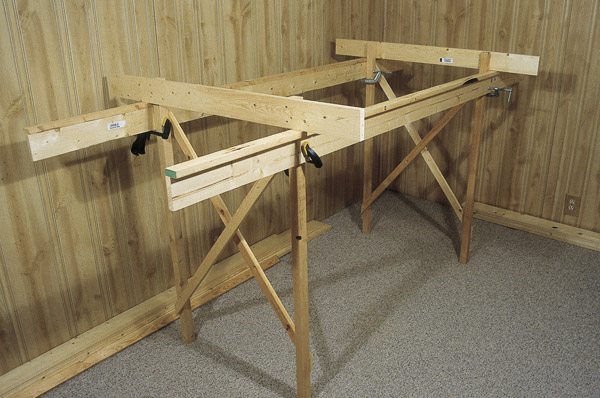
Open-grid benchworkStarter layouts are often flat and built on a 4 x 8 sheet of plywood. However, the majority of layouts have tracks at varying heights separated by grades. The easiest way to add elevation to a layout is to use open-grid benchwork. For this type of construction you place a plywood subroadbed under the […]
Read More…
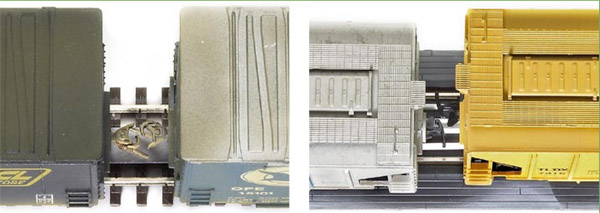
In any hobby, or indeed in any field, there is terminology used as shorthand by those with experience in the hobby or field, to refer to things specific to that hobby. That terminology, though, can be a barrier to entry for the uninitiated. This article is intended to serve as a brief introduction to model […]
Read More…
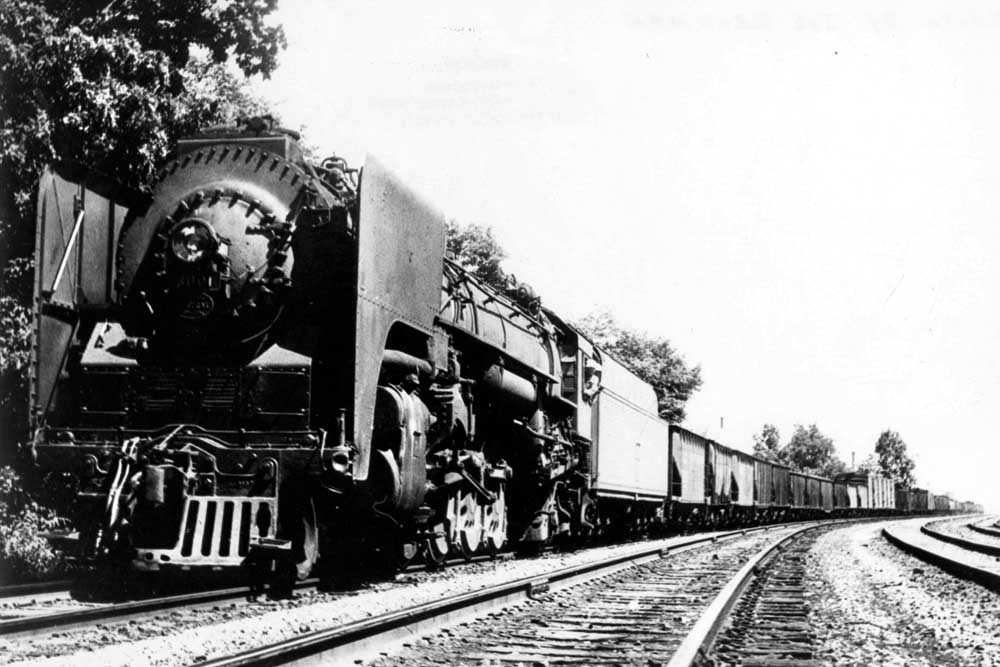
It can be difficult to get started in the hobby of model railroading. The terminology a beginner needs to learn is daunting for some, particularly for those without experience with or knowledge of prototype railroading. This article explains prototypes and modeling terminology for beginner model railroaders, or those looking to brush up on their model […]
Read More…
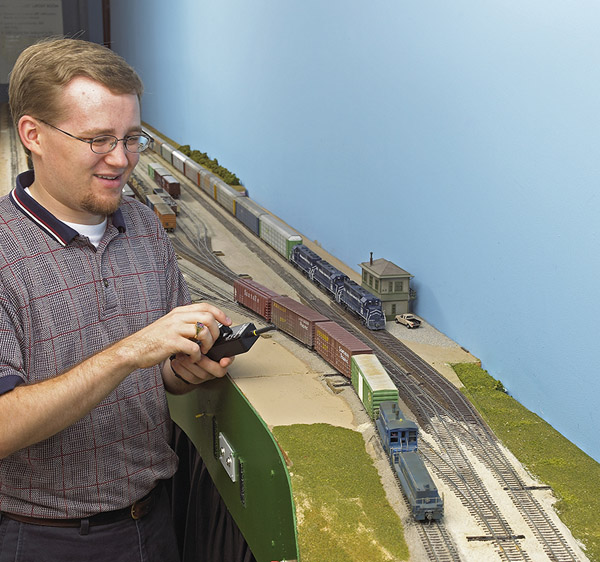
Dispatcher control (cab control)To operate more than one train using direct current (DC) train control, a model railroad can be divided into a series of isolated electrical blocks. A dispatcher then assigns one or more blocks to an operator’s cab, allowing him to run his train in these areas. Memory throttleA memory throttle allows an […]
Read More…

Code of railPrototype railroads use rail of varying heights and weights depending on the type and frequency of trains that run on it. On model railroads, code is the height of the rail measured in hundredths of an inch. See fig. 2. FlextrackWhile some modelers handlay their tracks by spiking the rail to individual wood […]
Read More…
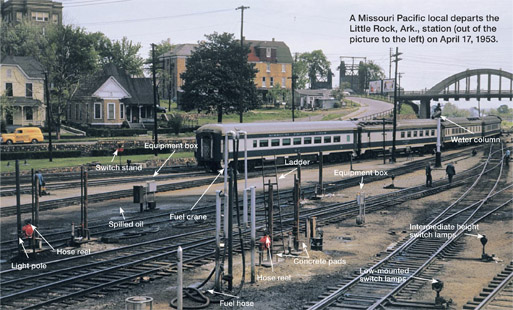
Want to add a basic locomotive servicing area but don’t have room for the turntable, roundhouse, and other shop and warehouse buildings typical of a large facility? As this 1953 photo of a Missouri Pacific RR fueling facility in Little Rock, Ark., shows, a no-frills fueling area can easily be modeled in limited space. At […]
Read More…
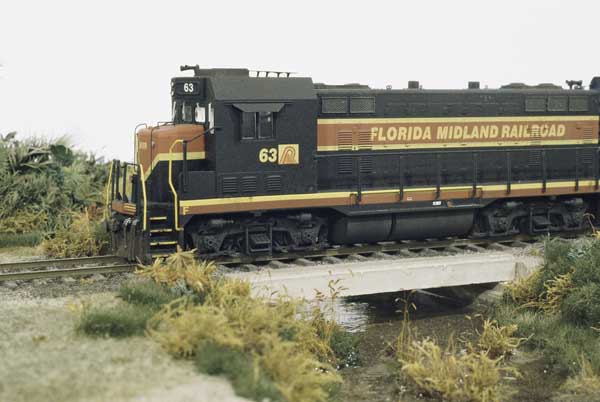
A precast concrete bridge spans a small creek on the Florida Midland RR. Lance Mindheim describes how he modeled this bridge using anchor-bolt cement and styrene sheet molds. Replicating the color striations, texture, chips, and cracks of concrete with paint and styrene is tricky at best. On the flip side, the texture of most concrete […]
Read More…
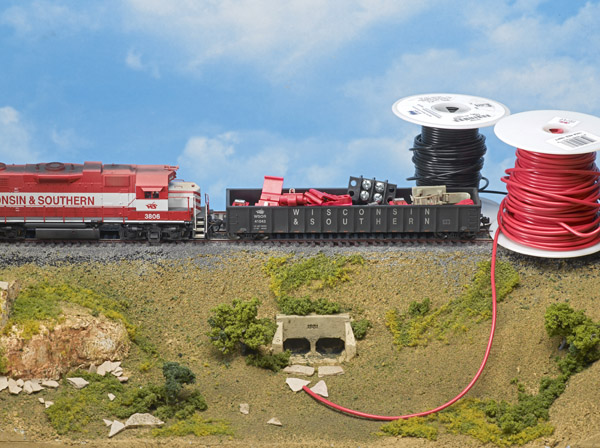
Running trains with Digital Com-mand Control (DCC) is a lot of fun, and it can make operating a model railroad an enjoyable experience. However, all those DCC electronic components and sound decoders don’t mean much if you can’t get a reliable signal to the tracks. When it comes down to it, nickel-silver rail is a […]
Read More…
Take a look at our list of roundhouses that still exist in 2010. Are we missing one? If so, click here. […]
Read More…

How to wire power-routing turnouts: While it may initially seem difficult, basic two-rail wiring for power-routing turnouts is easy if you understand and apply just two simple rules. The diagrams below demonstrate these crucial wiring principles. Rule 1: Gap the rails between turnouts located frog-to-frog. Place gaps in both rails, between turnout frogs in opposite […]
Read More…
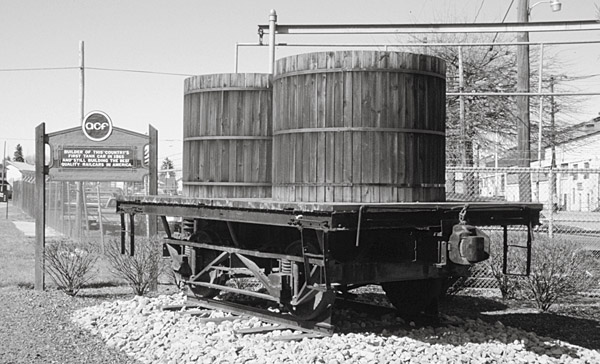
The invention of the tank car coincided with the discovery of oil in northwestern Pennsylvania in the 1860s. Oilmen quickly discovered that hauling oil to market in horse-drawn wagons or floating barrels down local streams wasn’t going to do the job as oil production ramped up. The oil industry needed to find a way to […]
Read More…

Gravel-covered siding. Gravel from an adjacent lot can mix with ballast on a siding. Paul partially covered this siding (lower right) at the freight house on his home layout. He embedded the rails of the spur (at left) into the parking lot. On some secondary lines the space between the ties is filled with dirt […]
Read More…











